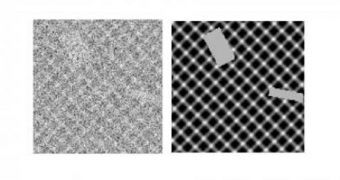Experts from the Air Force Research Laboratory (AFRL), led by Dr. Richard A. Albanese, announce the development of a new, computerized, large-scale surveillance method that relies heavily on the use of innovative algorithms and formulas. The sophisticated algebraic theories, which are called groups, rings and fields, will allow for more precise and fast object- and target-detection methods to be developed in the near future, the team believes. The work was funded by the Air Force Office of Scientific Research (AFOSR).
The official destination for the new technologies is of a military nature. Experts plan to use the new means of reviewing photographic evidence, video and radar images in order to draw up more advanced battle plans that always stay one step ahead of the enemy. Different orders of battle could also stem from the new algorithm, the scientists behind it say. “This technology is the result of several remarkable insights by two innovative mathematicians, Dr Myoung An and Dr Richard Tolimieri,” Albanese, who has also been the lead researcher on the new project, explains.
An and Tolimieri are not on their first research for the United States military. They recently finished designing a new type of sonar for the US Navy, which would allow ships to detect shallow water mines by simply using sonars. These devices function in about the same way radars do, except they use sound waves instead of electromagnetic ones. Now, the USAF is planning to adapt and tweak the same technology, in a manner that would make it useful for large-scale surveillance purposes. The two researchers say that, even though the new system reduces the amount of work humans put in by 99 percent, validation and verification are still things that have to be performed by human operators.
“One challenge of the research is the matching of the algebraic structure to the data and problems at hand. We are applying algebraic structures to data index sets and in this way finding patterns that were not easily detectable before,” Albanese explains. The new goal that the team set for itself was to add even more complex algorithms that would allow surveillance devices to see through obstacles such as dust, fog, and bushes, among others. In the future, medical research, alongside speech and language recognition will constitute just some of the fields where the formulas will be applied next.

 14 DAY TRIAL //
14 DAY TRIAL //